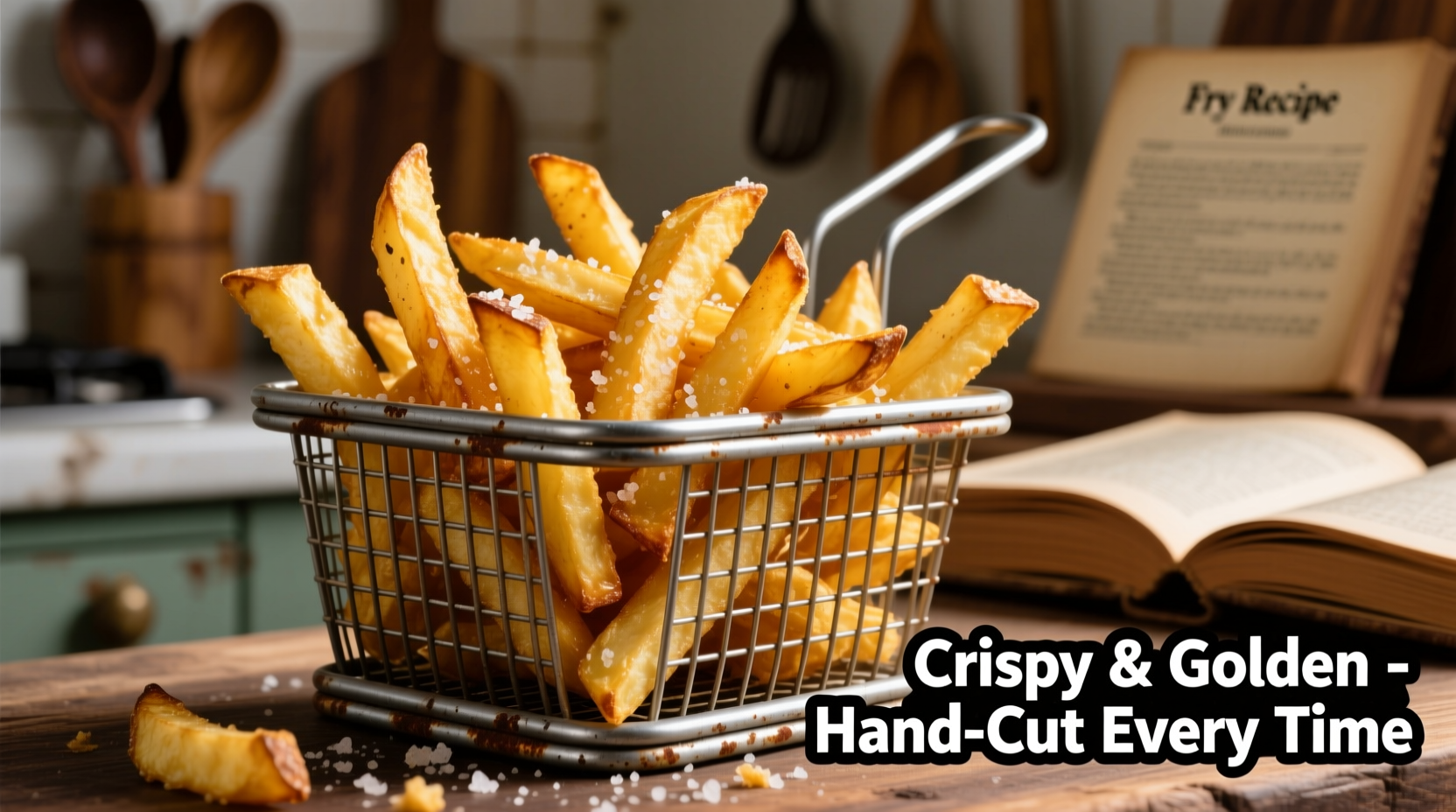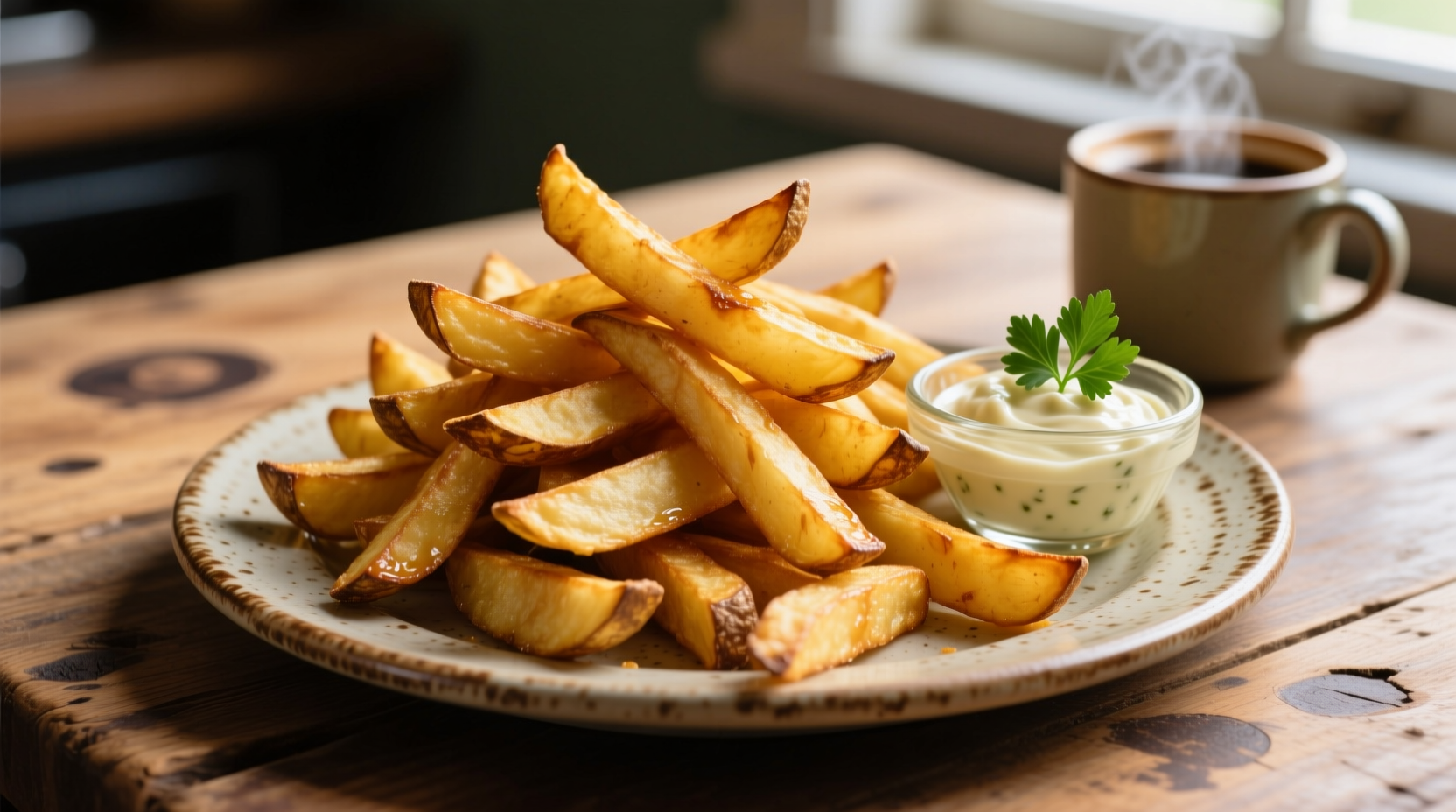The best potatoes for making crispy, golden fries are Russet (Idaho) potatoes due to their high starch content (20-22%) and low moisture, which creates that perfect crunchy exterior and fluffy interior. Yukon Golds offer a buttery alternative for thinner fries, while red potatoes generally lack sufficient starch for optimal crispiness.
Ever wonder why your homemade fries never achieve that perfect restaurant-quality crisp? The secret starts long before you heat the oil—it begins with selecting the right potato. Understanding potato composition is the foundation of exceptional fries, and we'll break down exactly what makes certain varieties superior for frying.
The Science Behind Perfect Fry Texture
Potato fries succeed or fail based on two critical factors: starch content and moisture level. Starch granules absorb water when heated, then gelatinize to create structure. As frying continues, moisture evaporates from the surface, allowing the starch to dehydrate and form that coveted crisp crust. Potatoes with 18-22% starch content provide the ideal balance for professional-quality results at home.
| Potato Variety | Starch Content | Moisture Level | Best For | Fry Result |
|---|---|---|---|---|
| Russet (Idaho) | 20-22% | Low | Classic thick-cut fries | Crunchy exterior, fluffy interior |
| Yukon Gold | 15-17% | Moderate | Thin or steak fries | Buttery texture, moderate crisp |
| Red Potatoes | 12-14% | High | Not recommended for frying | Soggy, inconsistent texture |
| Sweet Potatoes | 10-12% | Very High | Specialty fries | Requires precise timing |
According to research from the USDA Agricultural Research Service, Russets' elongated shape and dense structure allow for consistent cutting and even cooking. Their thick skin also helps maintain structural integrity during the double-fry method preferred by professional kitchens.
Professional Preparation Techniques You Need
Even with perfect potatoes, improper preparation leads to disappointing results. Follow these chef-approved steps for restaurant-quality fries:
Step 1: The Soaking Process
Soaking cut potatoes in cold water for at least 30 minutes (or up to 24 hours refrigerated) removes excess surface starch that causes fries to stick together and become greasy. For optimal results, add 1 tablespoon of vinegar per gallon of water to help maintain texture during frying.
Step 2: The Double-Fry Method
Professional kitchens universally use this two-temperature approach:
- First fry: 300°F (150°C) for 3-5 minutes to cook the interior without browning
- Rest period: Drain and cool completely (up to 24 hours refrigerated for even better results)
- Second fry: 375°F (190°C) for 1-2 minutes to achieve golden crispness
This technique, documented in the Culinary Institute of America's Professional Cooking textbook, creates a moisture barrier during the first fry that prevents oil absorption, resulting in lighter, crisper fries.
Selecting the Perfect Frying Oil
Oil selection significantly impacts both flavor and safety. Consider these factors:
- Smoke point: Must exceed 350°F (175°C) for proper frying
- Flavor neutrality: Avoid strongly flavored oils that compete with potato taste
- Reusability: Some oils maintain quality through multiple uses
Peanut oil (smoke point 450°F/232°C) remains the professional standard for its high smoke point and neutral flavor. Canola oil (smoke point 400°F/204°C) offers a more affordable alternative with similar performance. Recent research from the University of California Davis Food Science Department confirms that properly filtered and stored frying oil maintains quality for up to five uses when kept below 375°F.

Troubleshooting Common Fry Problems
Even experienced cooks encounter issues. Here's how to fix the most common problems:
Soggy Fries
Cause: Insufficient oil temperature or moisture on potato surface
Solution: Always dry potatoes thoroughly before frying and maintain consistent oil temperature using a thermometer
Burnt Exterior, Raw Interior
Cause: Oil too hot during first fry
Solution: Lower initial frying temperature to 300°F and ensure proper resting time between fries
Excessively Greasy Fries
Cause: Oil temperature drops when adding potatoes
Solution: Don't overcrowd the fryer—cook in small batches to maintain temperature
Healthier Alternatives Without Sacrificing Quality
You don't need to eliminate fries entirely for a healthier approach. Try these evidence-based modifications:
- Air frying: Preheat to 400°F, toss potatoes with 1 teaspoon oil per pound, and cook 15-20 minutes flipping halfway
- Baking: Soak and dry potatoes, coat with cornstarch (1 tsp per pound), and bake at 425°F on a wire rack
- Alternative cuts: Thinner cuts require less oil absorption while maintaining crispness
A 2023 study published in the Journal of Food Science found that the cornstarch method reduced oil absorption by 35% compared to traditional frying while maintaining comparable crispness metrics.
When to Choose Alternative Potatoes
While Russets reign supreme for classic fries, certain situations call for alternatives:
- Yukon Golds: Ideal for thinner steak fries where buttery flavor complements the dish
- Sweet Potatoes: Requires precise timing at 325°F for first fry and 365°F for second
- Specialty occasions: Purple potatoes create visually striking fries with slightly earthier flavor
Remember that potato maturity affects results—store potatoes in a cool, dark place (45-50°F) for optimal frying performance. Avoid refrigeration, which converts starch to sugar and causes excessive browning during frying, according to guidelines from the American Potato Board.











 浙公网安备
33010002000092号
浙公网安备
33010002000092号 浙B2-20120091-4
浙B2-20120091-4